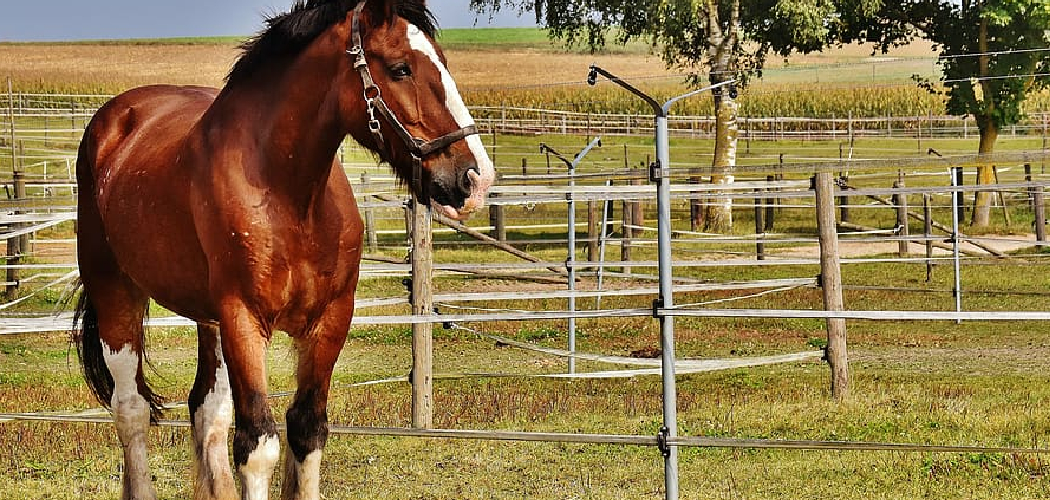The importance of a safe and secure fence cannot be overstated for horse owners. It is not just about keeping horses within the boundaries of your property; it’s also about their safety, preventing them from wandering into potentially dangerous situations. However, the cost of fencing can quickly escalate, making it a significant investment.
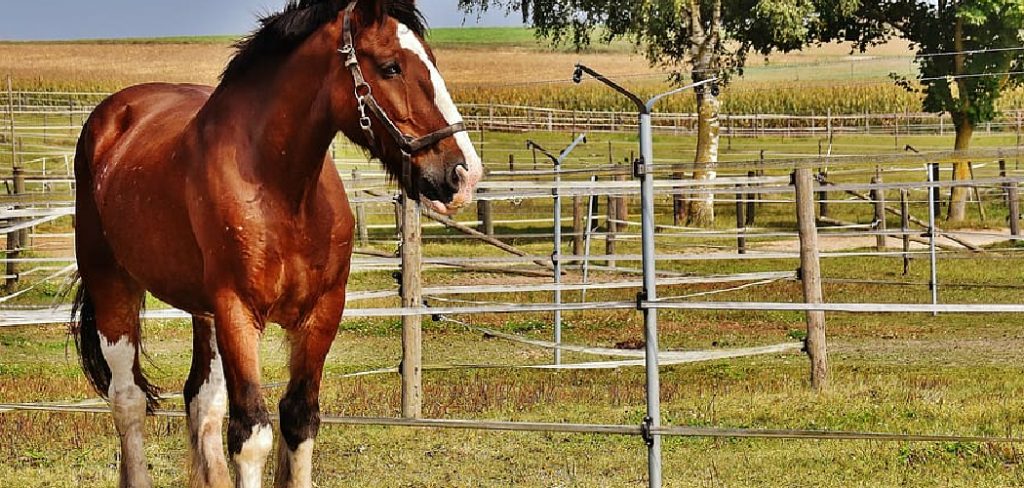
This is where the challenge lies: how to build a horse fence cheap without compromising on the quality and safety that your horses deserve. This guide aims to introduce cost-effective strategies and innovative ideas that can help you achieve a balance between affordability and reliability.
By exploring various materials, DIY options, and maintenance tips, you can erect a durable horse enclosure that safeguards your equine friends without breaking the bank.
Planning for Success
A. Understanding Your Needs
Understanding the specific needs of your horses and property is crucial when planning to build a fence. Factors like your horses’ breed, size, and activity level can greatly influence the type of fence you need. For example, larger, more active breeds may require sturdier, taller fences to ensure containment, while smaller breeds or less active horses might be fine with a lower fence.
Additionally, consider the size of your pasture. A larger area may benefit from more cost-effective fencing options, whereas stronger, more durable materials might be prioritized for smaller, high-traffic areas.
B. Local Regulations and Permits
Before starting your fencing project, it’s essential to familiarize yourself with local zoning regulations and obtain any necessary permits. These regulations may dictate your fence’s height, material, and location, impacting your plans and budget.
Checking with your local zoning office or town hall can provide you with the necessary guidelines to ensure your fence meets all legal requirements. Neglecting this step could lead to potential fines or the need to modify or remove the fence, resulting in wasted time and resources.
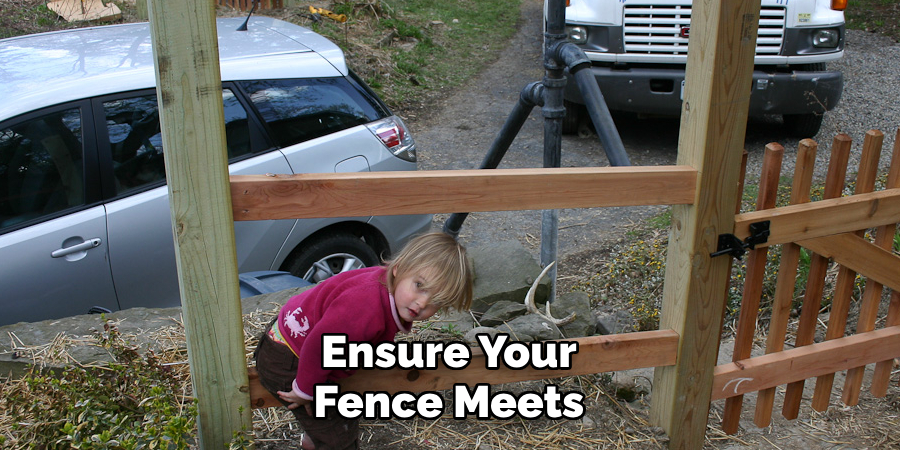
C. Choosing the Right Fence Type
When selecting the type of fence, consider your needs against various factors like cost, maintenance, and safety. Wood Fences are a traditional choice, offering a natural look that blends well with rural landscapes. They provide solid barriers but require regular maintenance, such as painting or staining, to prevent rot and decay.
Despite the upfront cost, wood fences can be a cost-effective solution long-term with proper care. Electric Fences are known for their cost-effectiveness and ease of installation. They serve as psychological barriers rather than physical barriers, making them less suitable for boundary fences but excellent for internal division.
Safety considerations, such as ensuring proper power levels and warning signs, are essential to avoid injuries to both horses and humans. Lastly, Recycled Materials Fences encourage creativity and environmental responsibility.
Finding suitable materials like used lumber or metal can significantly reduce costs, but it’s important to ensure that these materials are safe and free of harmful substances or sharp edges. Each type of fence offers unique benefits and challenges, so weigh these options carefully against your specific needs and resources.
Keeping Costs Down: Material Selection
A. Pressure-Treated Wood
Pressure-treated wood is an excellent option for horse fencing due to its affordability and durability. This wood type undergoes a specific process that impregnates it with preservatives, making it resistant to decay, insects, and fungal infection.
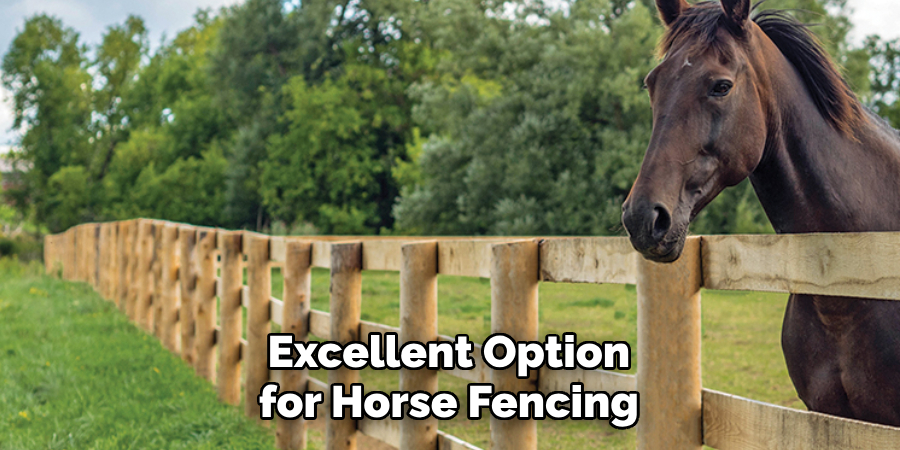
While initially more expensive than untreated wood, its longevity makes it a cost-effective solution for those looking to build a horse fence cheaply. To ensure its durability, it’s crucial to maintain pressure-treated wood by applying a sealant every few years, which prolongs its life and maintains its strength against the elements.
B. Recycled or Salvaged Materials
Utilizing recycled or salvaged materials is not only environmentally friendly but can also significantly reduce the cost of building a horse fence. Used lumber, repurposed fence posts, and creative alternatives like car tires are viable options that can cater to fencing needs while being cost-effective.
However, safety should never be compromised. Ensure that all materials are free from hazardous chemicals, sharp edges, and splinters. Additionally, when using unconventional materials like car tires, verify that they do not pose any risk to the horses who may come into contact with them.
C. Electric Fence Components
Electric fences represent a highly cost-effective option for horse fencing, mainly due to their reliance on psychological rather than physical barriers. The components—wire, posts, and energizers—can be sourced at relatively low costs. Polywire or polytape can be more affordable than traditional wire and is easier to install and maintain.

Plastic posts are also economical and offer flexibility in fence design and layout. When choosing energizers, consider solar-powered options to save on electricity costs. Always ensure that the components are compatible and rated for the intended use to maintain efficiency and safety.
D. Bulk Purchases and Savings
Buying materials in bulk is one strategy to keep costs down when building a horse fence. Many suppliers offer discounts for large orders, which can lead to considerable savings, especially for extensive fencing projects. This approach is particularly effective for standardized items like nails, brackets, posts, and even electric fencing components.
Planning your fencing project in detail and purchasing all required materials at once can maximize these bulk buying benefits. Additionally, consider collaborating with neighboring farms or horse owners to pool resources and increase the purchasing power, further driving down the costs of materials.
How to Build a Horse Fence Cheap: Building the Fence on a Budget
A. DIY vs. Hiring a Professional
Deciding between a DIY approach and hiring a professional to build a horse fence involves weighing cost against expertise. A DIY project can significantly reduce labor costs, offering substantial savings, especially if you possess basic construction skills and the necessary tools.
However, professionals’ expertise can ensure that the fence is durable, safe, and compliant with local regulations. Professionals can also complete the project faster and with less chance of errors that could lead to future repairs or modifications. Consider the complexity of the fence design, your skill level, and the time you can commit before making a decision.
B. Essential Tools
For a successful DIY horse fence project, the essential tools include a measuring tape for accurate distances, a level to ensure posts are vertical, a saw for cutting materials to size, a hammer or nail gun for attaching components, and a post-hole digger or auger for setting posts.
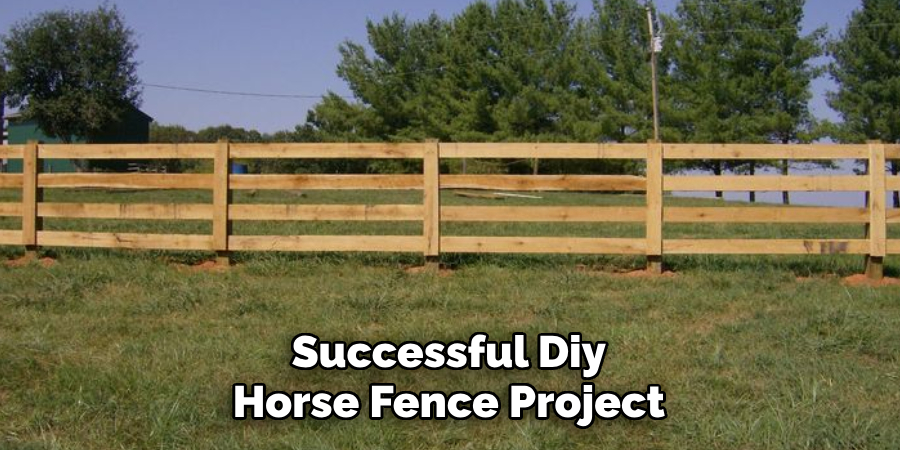
C. Setting the Posts
Setting the posts securely is critical for the longevity and stability of your fence. Start by using a post-hole digger or auger to dig holes deep enough to support the height of the fence—generally, one-third of the post’s length should be underground. To minimize materials, consider using gravel for drainage at the bottom of the hole, then insert the post and use a mix of dry concrete and soil.
Pour water over the mixture to set the concrete and fill the rest of the hole with soil, tamping it down firmly to eliminate air pockets. Post anchors may be employed for additional stability in soft or uneven ground.
They provide strong support without the extensive use of concrete, saving on materials and labor while ensuring that posts remain upright and secure.
D. Installing Rails and Pickets
Once the posts are set, attach the rails and pickets to create the fence structure. For rail attachment, measure and mark the desired height on each post to ensure uniformity. Use screws or galvanized nails to secure the rails into the posts, which provide a strong hold and resist rust.
When attaching pickets, maintain consistent spacing for uniformity and containment. Pre-drilling holes can prevent the wood from splitting. Consider using a level to verify straightness during installation. Selecting appropriate fasteners and following a consistent method will lead to a durable and aesthetically pleasing fence.
Finishing Touches and Considerations
A. Electric Fence Energizer Placement
For safe and effective use, place the electric fence energizer in a dry location close to a power source and ensure it’s easily accessible for maintenance. It should be away from flammable materials and installed out of reach of children and animals to prevent accidental contact.
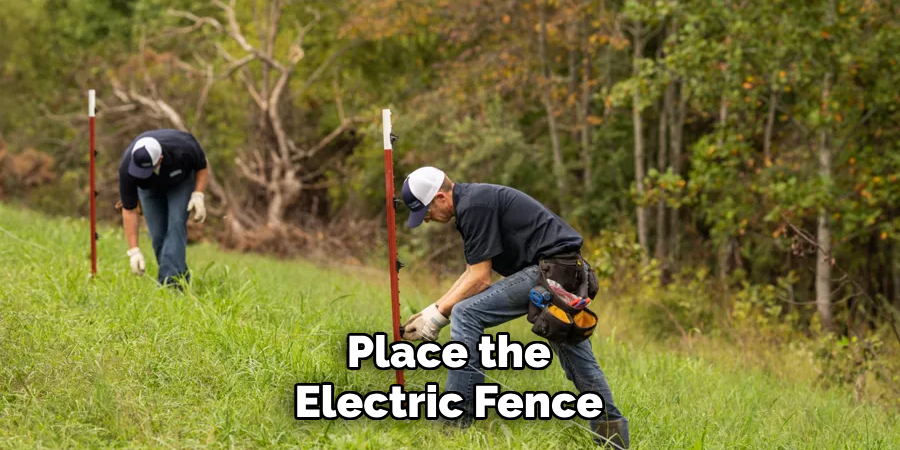
B. Gate Construction
Constructing a gate using materials similar to those of the fence ensures consistency and durability. Utilize sturdy posts on both sides for support, and select hinges capable of bearing the gate’s weight. For the gate itself, employ horizontal rails for structure and vertical pickets for containment, mirroring the fence design.
The gate should be wide enough for easy access, but maintain a snug fit to prevent escapes. Including a reliable locking mechanism is crucial to secure the gate both for the safety of the horses and to prevent unwanted entry.
C. Safety Precautions
Ensure all fencing and gate construction materials are horse-safe, without sharp edges or toxic treatments. Regular inspection and maintenance of the fence and gate are essential to promptly address any wear or damage. This vigilance guarantees the structure’s longevity and the horses’ safety.
How to Build a Horse Fence Cheap: Advanced Cost-Saving Techniques
A. Utilizing Natural Resources
Incorporating existing natural resources like trees or hedgerows into the design of a horse fence can significantly reduce costs and materials needed for construction.
By using these natural barriers as part of the fence line, you can minimize the number of posts and rails required, leading to a more cost-effective and environmentally friendly solution. Furthermore, integrating natural elements into fencing enhances the landscape’s aesthetic appeal and provides additional shelter and shade for the horses, contributing to their well-being.
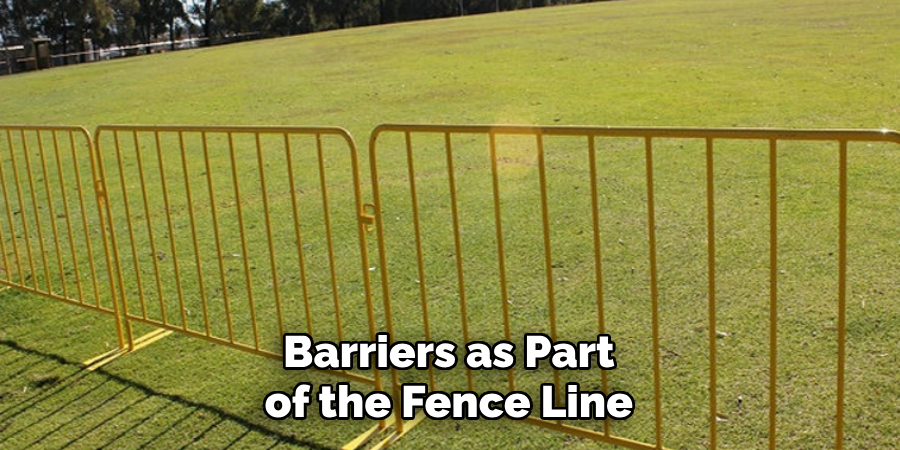
B. Sharing Fencing Costs with Neighbors
Exploring cost-sharing opportunities with neighbors who have adjoining pastures offers a pragmatic approach to reducing the financial burden of constructing a new fence. By collaborating on the fence that defines mutual boundaries, both parties can benefit from a reduced cost per foot, bringing about significant savings.
Additionally, this cooperative effort fosters a sense of community and mutual benefit, ensuring that the fence meets the needs and expectations of all involved. It’s essential, however, to establish clear agreements on the design, maintenance responsibilities, and cost distribution upfront.
C. Upcycling and Repurposing Materials
Creative repurposing of materials provides an innovative and eco-friendly approach to building a horse fence on a budget. Old wooden pallets, wire mesh, or even discarded plumbing pipes can be transformed into functional fencing components with a bit of ingenuity.
Not only does this strategy save on material costs, but it also contributes to waste reduction. It’s crucial, however, to ensure that all upcycled materials are safe and free from sharp edges or harmful substances that could potentially injure the horses. Proper treatment and modification of these materials can result in a durable, cost-effective, and visually appealing fencing solution.
D. Grant Programs and Assistance
Farmers and horse owners should investigate potential grant programs or local assistance initiatives designed to support agricultural fencing projects. Many states and agricultural extension offices offer funding opportunities aimed at promoting farm improvement and safety, which can cover a portion of the fencing costs.
These programs often focus on sustainable agriculture practices, including the implementation of environmentally friendly fencing solutions. Engaging with local agricultural community groups and extension offices is a pivotal step in accessing these resources, which can substantially offset the financial investment required for a new or upgraded fence.
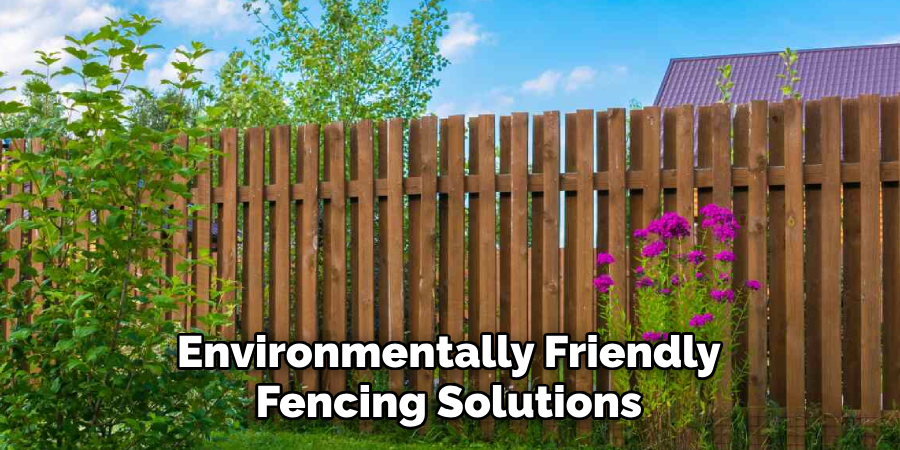
Long-Term Savings: Maintenance Strategies
A. Regular Fence Inspections
Conducting regular inspections of your horse fence is crucial for identifying and addressing potential issues early on. Frequent checks help in spotting loose posts, compromised rails, or faulty electric fence connections before they escalate into larger problems.
Inspecting the fence after heavy winds, storms, or significant weather changes ensures that any damage is promptly repaired, maintaining the integrity and security of the fence. This proactive approach not only extends the lifespan of your fence but also guarantees the safety of the horses, preventing possible escape or injury.
B. Wood Fence Maintenance
Maintaining a wood fence involves more than just aesthetics; it’s about preserving its strength and functionality over time. Regularly cleaning the fence to remove dirt, mildew, and debris, coupled with periodic re-staining or treating, helps protect the wood from the elements and prolongs its life.
Inspecting for signs of rot, insect damage, or wear and applying the appropriate treatments or repairs is vital. This care and upkeep help to prevent major replacements in the future, embodying a key strategy in long-term cost savings and ensuring the fence continues to perform its intended function effectively.
C. Electric Fence Maintenance
Upkeep of the electric fence is essential to ensure its effectiveness and longevity. Key maintenance tasks include routinely checking for breaks or corrosion in the wires, clearing vegetation from around the fence line to prevent energy loss and potential fires, and regularly testing the fence energizer to ensure it’s delivering the correct voltage. Proper weed control reduces the load on the energizer, making the fence more efficient.
These maintenance practices are paramount to providing continuous, reliable performance and safeguarding against the hazards of an inadequately maintained electric fence, blending safety with fiscal prudence over the fence’s operational lifespan.
Troubleshooting Common Fence Problems
A. Leaning or Loose Posts
Leaning or loose posts compromise fence stability and safety, necessitating prompt action. Stabilizing these posts can often be achieved by shoring up the base with additional tamping around the post to compact the soil and enhance stability.

For posts that have shifted considerably, installing diagonal braces anchored in the ground or attached to a sturdy adjacent post can provide the necessary support to realign and secure the post.
It’s essential to assess the extent of the shift or looseness to determine the best course of action, whether it be re-tamping, bracing, or, in some cases, replacement.
B. Broken or Damaged Rails
Broken or damaged fence rails not only detract from the overall appearance of the fence but also reduce its structural integrity. A repair may suffice for minor damage involving the reinforcement of the damaged section with a sister rail fastened alongside it.
Significant damage, however, usually requires that the broken rail be completely removed and replaced. Always ensure that the replacement material matches the existing fence in terms of type and treatment to maintain consistency and durability. Regular inspection and timely repair of damaged rails are key to prolonging the fence’s lifespan and functionality.
C. Electric Fence Issues
Common issues with electric fences include weak currents and animal escapes. A weak current can often be traced back to vegetation touching the fence, shorting it out, or problems with the fence energizer itself. Begin troubleshooting by checking the fence line for vegetation or debris and removing it.
Next, test the energizer with a voltmeter to ensure it’s delivering the correct voltage. For fences that fail to contain animals, assess if the current is strong enough and if the fence is adequately visible to the animals. Enhancements, such as adding flagging to the fence, can improve visibility and deterrence.
Safety Considerations for Horses and Humans
A. Horse Safety
Ensuring the safety of horses is paramount when designing and installing fences. Utilizing smooth materials without any sharp edges or protruding nails is crucial to prevent injuries. Additionally, the spacing between rails and pickets must be carefully considered to avoid trapping or entangling horses’ heads or limbs.
The ideal spacing discourages horses from attempting to reach through or jump over the fence, significantly reducing the risk of injury. These measures safeguard the animals’ well-being, maintaining a secure and stress-free environment for them to roam and graze.
B. Human Safety When Working with Electricity
When constructing and maintaining electric fences, human safety is a critical consideration. Adequate grounding of the fence is essential to prevent accidental electric shocks, ensuring the fence operates safely. Using high-quality insulators that are designed for electric fencing minimizes the risk of current leakage.
Before performing any maintenance work or adjustments on the electric fence, it is imperative to shut off the energizer to eliminate the risk of electrical injuries. These precautions ensure a safe environment for both the individuals installing and maintaining the fence and those who come into contact with it.
Conclusion
In exploring how to build a horse fence cheap, the critical strategies include meticulous planning, selecting appropriate materials, and never compromising on safety for both the horses and the humans involved. Effective planning begins with a clear understanding of the property’s needs, including its size and the number of horses to be contained.
Opting for cost-effective materials that maintain durability and safety, such as certain types of wood or wire, can significantly lower expenses without sacrificing quality. Regular maintenance is also key to avoiding costly repairs and replacements in the long run.
By adhering to these guidelines, one can achieve the dual goals of ensuring the well-being of their horses and maintaining fiscal responsibility. The tremendous satisfaction derived from constructing a functional, aesthetically pleasing, and budget-friendly horse fence offers peace of mind that the horses are secure and healthy in their environment.
This comprehensive approach demonstrates that with careful consideration and smart choices, creating a safe and economical enclosure for horses is entirely attainable, proving invaluable for horse owners who seek to maximize their resources while providing the best care for their animals.

